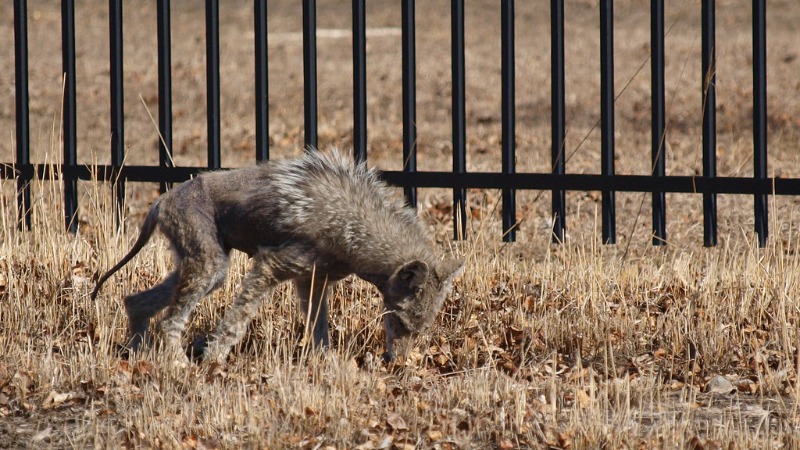The Chupacabra, a creature whose name translates from Spanish as “goat-sucker,” has been a focal point of cryptozoological curiosity since the mid-1990s. Alleged to attack livestock, particularly goats, and drain their blood, the Chupacabra has become a staple of modern folklore, especially in Latin America and the Southwestern parts of the United States. But what is the truth behind this enigmatic creature? Is it a real animal, a misunderstood phenomenon, or merely a myth fueled by collective imagination?
The Origins of the Chupacabra Legend
The Chupacabra legend began in Puerto Rico in 1995 when a series of mysterious livestock deaths left farmers puzzled and scared. Animals were found with puncture wounds on their necks and reportedly drained of blood. This peculiar pattern of predation led to stories of a strange creature roaming the countryside. Eyewitnesses described it as reptilian, with spines along its back, large eyes, and a gaunt, dog-like appearance.
Since those initial reports, sightings and accounts of the Chupacabra have spread across the Americas, with variations in its description. Some portray it as more akin to a hairless canine with a grotesque appearance, while others maintain that it has reptilian characteristics.
Evidence For the Existence of the Chupacabra
Eyewitness Accounts: Numerous people have claimed to have seen the Chupacabra, describing it in eerily consistent detail. These sightings are not confined to one region but span several countries, suggesting a pattern that extends beyond mere local folklore. For instance, in Texas and other parts of the American Southwest, there have been many reports of strange, hairless creatures that resemble the descriptions of the Chupacabra.
Animal Attacks: The hallmark of a Chupacabra attack is livestock found dead with small puncture wounds on their necks and supposedly drained of blood. These unusual killing patterns have been reported in various places and are often linked to sightings of the creature. For example, in Puerto Rico and Latin American countries, farmers have frequently discovered their goats and chickens dead under these mysterious circumstances.
Physical Evidence: Occasionally, dead animals believed to be Chupacabras have been found. These carcasses often appear to be mangy dogs or coyotes, but their unusual appearance and the context of their discovery keep the debate alive. In 2007, a strange creature was discovered in Cuero, Texas, that some claimed was a Chupacabra. Subsequent DNA tests, however, identified it as a coyote with severe mange.
Cultural and Historical Context: Legends of blood-sucking creatures predate the modern Chupacabra sightings and are found in various cultures. This includes tales of the “Chupamichini” in the Philippines and vampire-like creatures in European folklore. These similarities might point to a broader phenomenon where certain environmental and psychological factors lead to the creation of such legends.
Evidence Against the Existence of the Chupacabra
Scientific Explanations: Most scientists attribute the Chupacabra sightings to misidentifications of known animals suffering from severe mange. Mange, a skin disease caused by parasitic mites, can make animals like coyotes and dogs appear gaunt, hairless, and eerie. This explanation fits many descriptions of the Chupacabra, especially those resembling hairless canines. For instance, as previously noted in Texas, the “Chupacabra” was identified as a coyote with mange.
Lack of Concrete Evidence: Despite numerous sightings and stories, there is no definitive physical evidence of the Chupacabra’s existence. No carcasses or living specimens have been verified by the scientific community as a new or unknown species. Most purported Chupacabra remains have been identified as dogs, raccoons, or other common animals in poor health.
Media and Pop Culture Influence: The rise of the Chupacabra legend coincided with a period of media frenzy and the proliferation of the internet, which spread and amplified these stories. Some researchers argue that the Chupacabra is a product of modern mythology, fueled by sensational media coverage and the power of suggestion. The original Puerto Rican Chupacabra sightings began shortly after the release of the sci-fi horror movie Species, which featured a monster with similar characteristics.
Natural Predation Patterns: The puncture wounds and blood loss attributed to Chupacabra attacks can be explained by natural predation. Many predators, such as big cats and birds of prey, attack the neck and can leave similar marks. Additionally, the idea of livestock being drained of blood is often debunked upon closer examination, where it’s found that the blood is simply not visible due to natural coagulation and pooling.
The Chupacabra in Modern Culture

The Chupacabra has transcended its origins to become a significant figure in popular culture. It appears in books, television shows, and movies, often portrayed as a mysterious or menacing creature. The legend has even inspired episodes of popular series like The X-Files and Scooby-Doo.
The Chupacabra remains an enigmatic figure on the fringe of the animal kingdom. While science and skepticism provide strong arguments against its existence, the consistency of eyewitness reports and cultural impact keep the legend alive. Whether it’s a misidentified creature, a manifestation of collective fears, or something yet to be discovered, the Chupacabra continues to captivate our imagination.
Until definitive evidence emerges, the Chupacabra will remain in the realm of mystery, a symbol of the unknown lurking just beyond our understanding.
